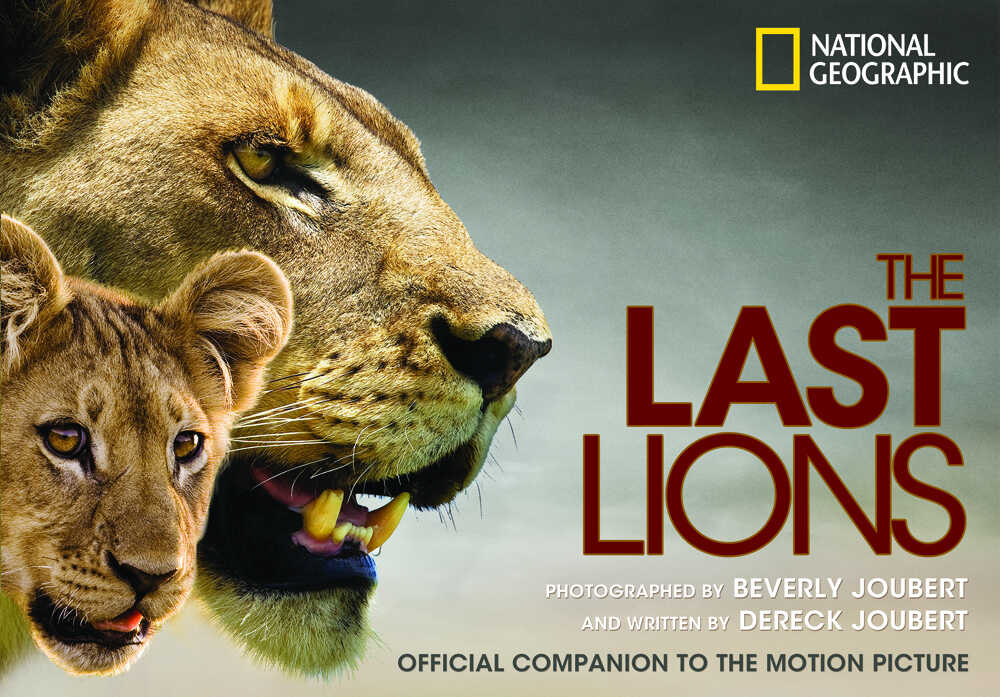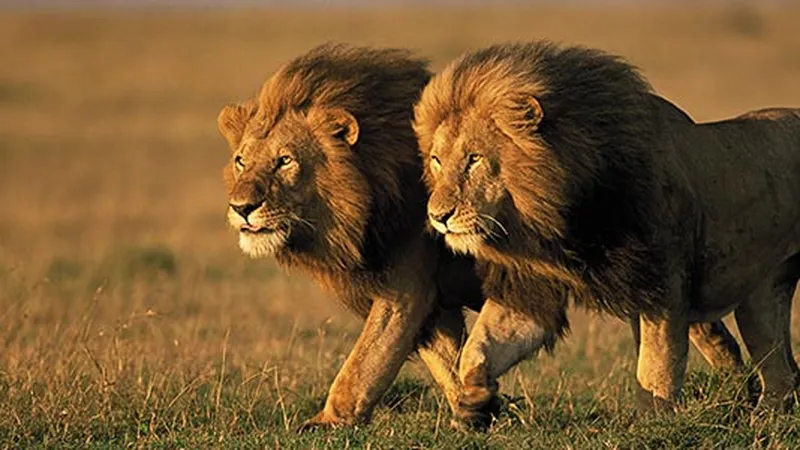So, have you ever wondered if lions ever get lost? It’s an intriguing question, right? After all, these majestic creatures are known for their sense of direction and impressive hunting skills. But, are they immune to losing their way? Well, let’s shed some light on this intriguing topic and explore whether the kings of the jungle ever find themselves in a bit of a pickle when it comes to navigation. Get ready to uncover the truth behind the innate sense of direction these mighty felines possess!

Habitat and Territory
Territory Size
Lions, the majestic big cats known for their strength and regal presence, inhabit a variety of habitats across Africa and a small population in the Gir Forest of India. These habitats range from grassy plains and savannas to dry woodlands and scrub. While their territorial range can vary depending on factors such as habitat quality and food availability, it is generally estimated that a lion’s territory can span between 20 to 400 square kilometers (8 to 155 square miles). However, it is important to note that the actual size of a lion’s territory can be influenced by various ecological factors and interactions with neighboring lion prides.
Home Range
Within their larger territory, lions establish a smaller home range, which serves as their immediate hunting and living area. The size of a lion’s home range can vary depending on factors such as prey abundance and the number of competing prides nearby. The home range is typically defended by the resident pride against intruding lions to ensure the availability of prey and resources. The size of a lion’s home range is usually smaller than the overall territory and can range from about 20 to 150 square kilometers (8 to 58 square miles).
Lion Navigation
Natural Instincts
Lions possess remarkable navigational instincts that have been honed through generations of evolution. These instincts enable them to move across vast landscapes, find suitable habitat, and locate adequate prey sources. Lions have a keen sense of smell, which allows them to detect scents from afar, whether it be the scent of a potential mate or the scent of a fresh kill. Additionally, lions have excellent hearing and can pick up on sounds from long distances, aiding in their navigation through their territories.
Navigational Tools
In addition to their natural instincts, lions also utilize a variety of navigational tools to aid in their movements. One such tool is their ability to mark their territories with scent markings, such as urine and anal gland secretions. These scent markers serve as a way for lions to communicate with other pride members and deter potential intruders. Lions also rely on landmarks and visual cues, such as prominent trees or distinctive geographical features, to navigate their surroundings. The combination of natural instincts and navigational tools allows lions to move with relative ease throughout their habitats.
Group Dynamics and Communication
Prides and Social Structure
Lions are highly social animals and live in groups called prides. A pride typically consists of a dominant male lion, several lionesses, and their offspring. The lionesses within a pride are usually closely related, often being sisters, and they form the core of the social structure. The dominant male lion is responsible for defending the pride’s territory and mating with the lionesses. The lionesses work together to hunt and raise the young cubs, creating a strong and cohesive social unit.
Communication
Communication plays a vital role in the functioning of a lion pride. Lions use a variety of vocalizations, including roars, growls, and moans, to communicate with each other over long distances. These vocalizations serve multiple purposes, such as establishing territory boundaries, coordinating hunting efforts, and maintaining social cohesion within the pride. Apart from vocalizations, lions also utilize body language, such as facial expressions, tail movements, and postures, to convey messages to one another. This intricate system of communication ensures effective coordination and cooperation within the pride.
Hunting and Prey
Lion’s Hunting Abilities
Lions are highly skilled hunters, capable of taking down large prey such as zebra, wildebeest, and buffalo. Their muscular build, sharp claws, and powerful jaws make them formidable predators. One of their key hunting strategies is to work in coordinated groups, with lionesses forming strategic hunting groups to increase their chances of a successful kill. By utilizing their stealth, speed, and exceptional teamwork, lions are able to overpower and bring down their prey.
Prey Availability
The availability of prey plays a significant role in a lion’s success as a hunter. Lions are primarily opportunistic hunters, meaning they will target the most readily available and vulnerable prey species within their territories. The availability of prey can fluctuate depending on ecological factors, such as seasonal migrations and natural fluctuations in prey populations. In areas where prey is scarce, lions may be forced to travel long distances in search of suitable hunting grounds, potentially leading to temporary displacements and changes in their territorial movements.

Migration and Dispersal
Nomadic Lions
While lions are known for their territorial behavior, there are instances where lions exhibit nomadic tendencies. Nomadic lions are individuals or small groups of lions that do not hold a permanent territory and instead move across vast areas in search of food and suitable habitat. These nomads often consist of young male lions who have been displaced from their natal pride and are seeking to establish their own territories. Nomadic lions can cover extensive distances, sometimes crossing multiple prides’ territories and even national park boundaries.
Dispersal of Young Males
One of the primary reasons for lion dispersal is the natural process of young males leaving their natal pride. As these young males mature, they face increased competition from the dominant male within their pride. To avoid conflict and increase their chances of survival and reproduction, these young males will venture out in search of new territories. This dispersal not only helps reduce inbreeding within prides but also ensures the genetic diversity and long-term survival of lion populations. The journey of a dispersing young male lion can be challenging, with potential encounters with other males and traversing unfamiliar landscapes.
Human-Induced Displacement
Encroachment and Deforestation
Human activities, such as encroachment into lion habitats and deforestation, pose significant threats to lion populations. As human populations expand and natural habitats are converted for agriculture or urban development, lion territories become fragmented, limiting their movement and access to resources. The loss of habitat can lead to increased competition among lions, as their territories shrink and prey becomes scarce. The encroachment of human activities into lion habitat not only disrupts their natural navigation patterns but also increases the likelihood of human-lion conflicts.
Human-Animal Conflict
Human-lion conflict arises when lions come into close contact with human settlements or livestock. As lions navigate their territories, they may unintentionally venture near human communities, leading to instances of livestock predation or human attacks. In response, humans may retaliate by killing or capturing lions, further disrupting their natural navigation and social dynamics. Efforts to mitigate human-lion conflict include the establishment of buffer zones, the implementation of predator-proof enclosures for livestock, and community education programs to promote coexistence between humans and lions.
Conservation Efforts
Protected Areas
Conservation organizations and governments have established protected areas, such as national parks and wildlife reserves, to safeguard lion populations and their habitats. These protected areas aim to provide undisturbed habitats for lions to roam freely, ensuring their ability to navigate and establish territories. By designating certain areas as protected, conservationists can mitigate the negative impacts of human activities and provide a safe haven for lions and other wildlife.
Translocations
In some cases, translocations are carried out to address issues of habitat loss and population decline. Translocations involve capturing lions from one area and relocating them to another suitable habitat where they can thrive. This conservation strategy helps restore or establish new lion populations in areas where they have been extirpated or are at risk of local extinction. Translocations can aid in maintaining genetic diversity, reducing the risk of inbreeding, and promoting healthy lion populations. However, careful planning and monitoring are required to ensure the success and long-term viability of translocated individuals.
Instances of Lost Lions
Unusual Circumstances
While lions generally have a strong sense of navigation and territorial awareness, there have been instances of lions getting lost or disoriented. Unusual circumstances, such as severe weather events, may disrupt a lion’s ability to navigate effectively. For example, during floods or natural disasters, lions may be forced to leave their territories and seek higher ground, potentially resulting in temporary disorientation. Additionally, factors such as habitat destruction, drastic changes in prey availability, or encounters with unfamiliar environments can also contribute to instances of lost lions.
Human Interventions
Human interventions, such as habitat fragmentation and translocations, can inadvertently lead to instances of lost lions. As natural habitats are fragmented by human activities, lions may struggle to navigate across fragmented landscapes, leading to increased dispersal and potential loss of individuals. Similarly, during translocations, lions may experience temporary disorientation as they are placed in unfamiliar territories. However, with proper monitoring and adaptation, these interventions can ultimately contribute to long-term conservation efforts.

Tracking and Research
GPS Collaring
Advancements in technology, such as GPS collars, have revolutionized the tracking and research of lions. GPS collars provide researchers with real-time data on lion movements, allowing for accurate tracking of their territorial movements and hunting patterns. This technology offers valuable insights into the navigation behavior of lions and aids in the identification of key wildlife corridors and areas crucial for their conservation.
Monitoring and Observation
Close monitoring and observation of lion populations are essential for understanding their navigation patterns and identifying any potential disruptions. Conservationists and researchers conduct regular surveys, camera trapping, and field observations to collect data on lion behavior and movements. By closely monitoring lion populations, conservation efforts can be tailored to address specific threats and ensure the long-term survival of these magnificent creatures.
Conclusion
Lions, with their innate instincts, group dynamics, and navigational tools, are adept at navigating their territories and finding suitable habitats. However, human-induced displacement, habitat loss, and other factors can disrupt their navigation patterns and pose significant challenges to their survival. Conservation efforts, such as the establishment of protected areas and translocations, are crucial for safeguarding lion populations and ensuring their continued presence in the wild. Through research, monitoring, and community involvement, we can better understand and protect these iconic creatures, allowing them to roam freely and thrive in their natural habitats.
